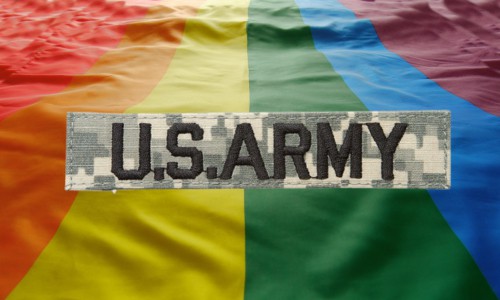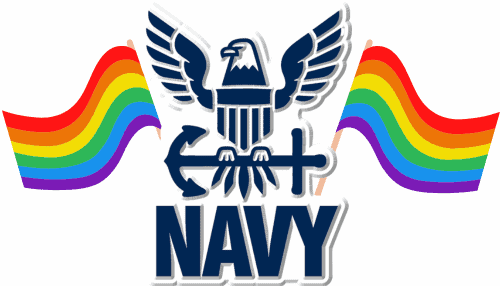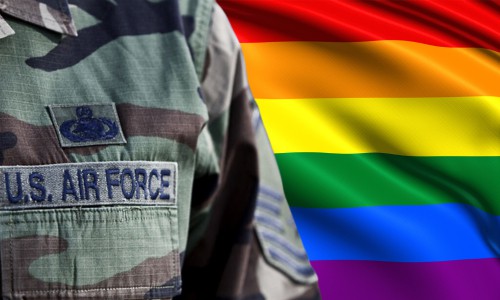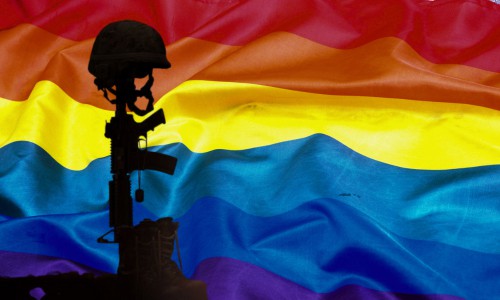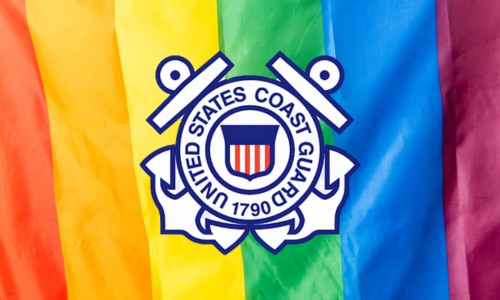The question of which branch of the military has the most gays has long been a topic of interest. According to a 2015 health survey, the Navy had the highest percentage of members with an LGBT identity.
In this blog post on the gayest branch of the military, we will further explore LGBTQ+ representation in each branch of the military, assess the level of inclusion and acceptance of LGBTQ+ military members.
Table of Contents
LGBTQ+ Representation in Each Branch of the Military
To begin our examination, let’s consider the five main branches of the military: the Army, Navy, Air Force, Marine Corps, and Coast Guard.
2015 Health Related Behaviors Survey Results
| Service Branch | Identified As LGBT |
| Army | 5.5 percent |
| Navy | 9.1 percent |
| Air Force | 5.3 percent |
| Marine Corps | 4.4 percent |
| Coast Guard | 5.2 percent |
But LGBTQ+ representation in each branch of the military has evolved over time, reflecting changing societal attitudes and policies.
As such, it is now difficult to provide an exact breakdown of the percentage of LGBTQ+ individuals in each branch due to a lack of homosexual statistics. Nonetheless, we can explore the progress made and the overall climate of inclusion and acceptance within these branches.
1. Army
The Army has implemented various measures to promote diversity and inclusivity. Efforts have been made to provide education and training on LGBTQ+ issues and ensure that discrimination or harassment based on sexual orientation or gender identity is not tolerated.
The U.S. Army has established the Army Diversity Office (ADO), which aims to foster a diverse and inclusive environment for all soldiers. This office provides resources, training, and support to promote understanding and respect for LGBTQ+ individuals.
The branch also has an Equal Opportunity Program that addresses discrimination and harassment, including those based on sexual orientation or gender identity.
The U.S. Navy has also made efforts to promote LGBTQ+ inclusion. In 2011, the “Don’t Ask, Don’t Tell” policy was repealed, allowing gay, lesbian, and bisexual sailors to serve openly, as long as they pass Navy requirements for males or females.
Additionally, in 2016, transgender individuals were allowed to serve openly in the Navy. The Navy continues to work towards creating a diverse and inclusive environment for all its members.
The U.S. Navy has established the Navy Pride and Diversity Association (NPDA), an official resource group that supports LGBTQ+ service members. The NPDA provides mentorship, networking opportunities, and advocacy for LGBTQ+ sailors.
In addition, the branch offers educational initiatives such as the Safe Space Ally Program, which trains personnel to be allies and advocates for LGBTQ+ individuals.
3. Air Force
The U.S. Air Force has made significant strides in LGBTQ+ inclusion. Similar to the other branches, the repeal of “Don’t Ask, Don’t Tell” (DADT) in 2011 allowed gay, lesbian, and bisexual individuals to serve openly.
In 2019, the Air Force updated its dress and appearance regulations to accommodate religious and personal grooming practices, including hairstyles commonly associated with certain gender identities. It also has policies to support service members whose families are impacted by anti-LGBT laws.
In April 2021, the U.S. Air Force established the Barrier Analysis Working Group (BAWG) with a LGBTQ+ Initiative Team to examine and identify barriers that LGBTQ+ service members may face and develop strategies to remove those barriers.
4. Marine Corps
The U.S. Marine Corps has made efforts to foster an environment of acceptance and inclusion. The repeal of DADT in 2011 allowed gay, lesbian, and bisexual individuals to serve openly in the Marine Corps.
The branch has also implemented policies to address discriminatory behavior and ensure all Marines are treated with respect and dignity. For instance, they have policies to let members transfer if their state laws are against LGBT.
The U.S. Marine Corps also has established the Diversity and Inclusion Branch, which is responsible for promoting diversity and equality within the Marine Corps. The branch actively works to address issues of discrimination and harassment and provides training on LGBTQ+ inclusion.
Last but not least, the branch has put forward Marine Corps Diversity Action Plan, which outlines specific goals and initiatives to foster an inclusive environment.
5. Coast Guard
The U.S. Coast Guard has been working towards LGBTQ+ inclusion and acceptance. Following the repeal of DADT, gay, lesbian, and bisexual individuals have been able to serve openly in the Coast Guard. The branch has also implemented diversity and inclusion programs to promote understanding and respect for all service members.
Their Diversity and Inclusion Action Team is also noteworthy, as it focuses on promoting diversity and inclusivity within the Coast Guard.
Frequently Asked Questions
Historical Context Of LGBTQ+ In The Military?
The historical treatment of LGBTQ+ individuals within the military has been marked by discrimination and exclusion.
For instance, the policy known as “Don’t Ask, Don’t Tell” (DADT) was in effect from 1993 to 2011, prohibiting LGBTQ+ individuals from serving openly. However, progress has been made in recent years to create a more inclusive environment.
The repeal of DADT in 2011 allowed gay, lesbian, and bisexual individuals to serve openly, and in 2016, the ban on transgender individuals serving openly was lifted. These policy changes have contributed to greater LGBTQ+ inclusion and acceptance in the military.
Challenges Faced By LGBTQ+ Military Members?
Here are some of the challenges faced by LGBTQ+ military members:
- Discrimination and Harassment
Despite policy changes, discrimination and harassment based on sexual orientation or gender identity can still occur. LGBTQ+ service members may face prejudice, bias, and mistreatment from their peers or superiors, which can have a detrimental impact on their well-being and morale.
- Lack of Support
Some LGBTQ+ military members may feel isolated or unsupported within their units. Limited access to resources and support networks specifically tailored to their unique needs can make it more challenging to navigate the military environment and address any issues they may face.
- Unequal Treatment
LGBTQ+ military members may encounter unequal treatment when it comes to policies, benefits, and opportunities. For example, transgender service members may face additional challenges regarding medical care, access to gender-affirming treatments, and policies related to their gender identity
Initiatives and Support for LGBTQ+ Military Personnel?
Recognizing the importance of supporting LGBTQ+ military members, various initiatives and organizations have emerged to provide resources, advocacy, and community.
Organizations like the Military Equality Alliance and the Modern Military Association of America offer support networks, legal assistance, and educational resources to help LGBTQ+ military personnel navigate their careers.
Furthermore, military branches have implemented policies and programs aimed at promoting diversity and inclusion. These initiatives include diversity training, the establishment of LGBTQ+ resource groups, and non-discrimination policies.
How many gays are in the military?
The exact number of LGBTQ+ individuals serving in the military is difficult to determine, as sexual orientation and gender identity are personal and not always disclosed. Additionally, there is no official tracking or reporting system to gather LGBT statistics.
However, it is widely acknowledged that there is a gay percentage. LGBTQ+ individuals have served and continue to serve in various capacities within the military. A health survey from the Rand Corporation in 2018 finds that 6.1% of those in the US military self-identified as LGBT.
What branch of the military has the most gays?
There are no current statistics on the number of LGBT in the US military, nor is there a ratio of gay to straight across the military branches. So, this question cannot be straightforwardly answered, although it’s generally believed that the branch with the most gays in the military is the Navy.
Conclusion
So, while most people would cite the Navy as the gayest branch of the military, it’s important not to overlook the military’s efforts for inclusivity and acceptance. Their recognition of same-sex marriages has shown their open-mindedness and willingness to progress toward gender inclusivity and diversity.
In any case, I believe it’s important to recognize the sacrifices and contributions made by military members, no matter what their sexual orientation or gender identity is.

I am Everett Bledsoe, taking on the responsibility of content producer for The Soldiers Project. My purpose in this project is to give honest reviews on the gear utilized and tested over time. Of course, you cannot go wrong when checking out our package of information and guide, too, as they come from reliable sources and years of experience.


